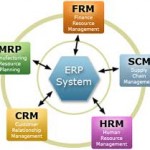The company I work for has been going through a new ERP implementation for the last several months. In the past, for new ERP implementations or for upgrades of existing ERP systems, we have typically cascaded implementations at our regional facilities, beginning with the regional facility with the most demand. By doing this, we were able to focus our resources in one area and ensure the system functioned properly, including all reports, prior to rolling it out to others. For this implementation, we elected to go with a “Big Bang” approach, upgrading all facilities simultaneously. We initially identified several advantages to taking this approach, many of which never came to fruition for various reasons.
Now that we are 6 months into our implementation, it is evident that the “Big Bang” approach was not the appropriate method to take. For the first 3 months of the implementation, we had IS and IT resources travelling the world to support our various locations to ensure the systems were functioning, not necessarily functioning properly, but just getting basic transactions through. This period of travelling and troubleshooting exhausted our IS and IT resources. Still, after 6 months, only about 95% of the transactions are flowing correctly and we seem to run into show-stoppers at least once per month. After that initial 3 month period, when things had settled down on the transactional side, we began the arduous process of getting basic reports to function. These include financial reporting, financial analysis, production analysis, order management, purchasing, and human resources reports. These have seemingly been stalled since the implementation began and there is little confidence of it being completed anytime soon.
So, the question becomes: when is the right time to redefine the project manager? It seems through each phase of the implementation, the project manager has shifted. It has gone from CIO to Network Director to Systems Director to Applications Director. This is not to say that each of these individuals isn’t doing everything in their power to ensure these issues get addressed, but there is no consistent list of issues or person to direct concerns to. There is no project manager interacting with each function defining priorities. We’re really seeking one point of contact to interact with one single point of contact within each of our functions to take control. However, there could be political implications to even suggesting a change of project manager. And, frankly, there may not be anybody willing to take that position as it could have implications on their career going forward.
For this particular project, we defaulted to a project manager in the IS and IT group, but perhaps, we should have considered a more skilled project manager outside of that group that could developed a more reliable risk management plan and mitigated some of those risks prior to the implementation. The users would have likely been more satisfied with a project manager that is responsive and organized, rather than a project manager that has the technical knowledge of the implementation without the project management skillset. Can functional leaders be expected to efficiently manage projects within their organizations if they span across several functions?





